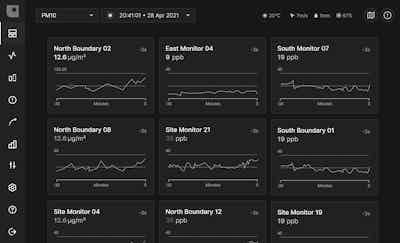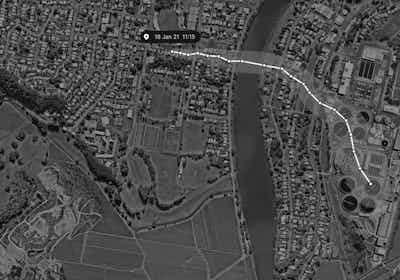Odour management plans that were once effective for wastewater treatment facilities years or decades ago are in many cases insufficient due to community expectations.
For wastewater treatment plant operators servicing growing communities, protecting their social license to operate by quickly resolving conflicts can be more difficult than ever before. Today complex and advanced odour management technology is also much more accessible and easier to understand and interpret even for non-subject matter experts.
With real-time insights based on local weather conditions, operators can support the three pillars of effective odour management plans: compliance, optimisation and community engagement.
Success in addressing these pillars relies on rapid response to potential or unfolding odour issues, staying in the community’s good books and remaining on schedule.
The move to city outskirts: How will odour management strategies change?
Growing populations everywhere are flocking to city outskirts in chase of open living spaces and a lifestyle away from the hustle and bustle of the inner suburbs.
The nature of work is also changing. While just a few years ago most of us would commute to a physical workplace, many companies are now giving employees the option to work from home – whether it’s a couple of days a week or full-time. This has given people the flexibility to move to outer-metropolitan perimeters and away from city centres.
But with this shift comes new challenges and points of contention for communities and operations like wastewater treatment facilities.
As city populations expand into their outskirts, they move into closer proximity of previously isolated waste and industrial facilities. Locations that were once used as buffer distances to help industrial facilities keep odour within reasonable levels in neighbouring communities are becoming increasingly residential.
Today’s communities have high expectations. Living with offensive odours can be both unpleasant and – in some cases – can cause health problems. This adds to the critical nature of effective odour management.
Odours are invisible and diagnosing their source can be difficult. To make matters more challenging, sensitivity to odour varies from person-to-person. Even in low concentrations people may experience headaches, eye, nose and throat irritation and nausea.
To keep complaints and disruptions to a minimum, wastewater treatment facilities are recognising the need to pivot and rethink their odour management strategies in order to future-proof operations and co-exist with the community.
Traditional odour management strategies do not satisfy today’s needs
The complexities of odour management can already be difficult to navigate without the added challenge of communities moving closer to facilities.
When odour complaints are made, minimising the impact on both the communities relies on operational personnel having the information needed to accurately and quickly diagnose the source of the problem readily available.
If this data isn’t on-hand and can’t be easily interpreted, investigating the cause of disruptive odour emissions and finding a solution becomes more difficult and time-consuming. Rapid changes in weather and historical reporting data is important information to have, but with little context it’s often unhelpful.
Unfortunately, most odour management systems overlook how the information is displayed and focus instead on the collection and storage of data. While this data is still useful when applied, analysis takes time and requires some understanding in the subject area.
This leaves operational personnel investigating complaints for a prolonged period of time, which takes away from their usual day-to-day responsibilities. Delays can cause and intensify tensions with dissatisfied nearby communities.
Often when operators have reached the end of lengthy investigations, results are often inconclusive. Opportunity for operational improvement may have already passed. Odour issues stem from a myriad of variables, such as rapid changes in weather, that can occur quickly at a site-specific level with little notice from general weather forecasts of the local area.
Environmental intelligence: A proactive and practical solution for odour management
Insights from environmental intelligence have changed the game for operators at wastewater treatment plants. They now have a bird’s eye view of operations at their fingertips, which paints a clear picture of what has happened before, what is happening right now and what is likely to happen in the hours and days ahead.
Simple visualisation and actionable insights derived from complex weather data make it possible for operators to act on odour risk without needing to be an expert in the area. Teams across wastewater treatment plants can receive early warnings, predict when odour problems may occur and take action to mitigate risks ahead of time.
Accurate real-time data makes it possible to calculate odour at specific locations, whether that’s within their facility or outside its boundaries, both in the present and up to 72 hours in advance. With reverse trajectory modelling, investigation times of odour complaints from the community can be drastically shortened by pinpointing the likely source of the event.

When a complaint is directed at the plant, easy-to-understand information can be shared with residents living nearby. This helps facilities avoid complaints, reduce costs and maintain a positive reputation and social license to operate.
Access to this environmental intelligence has made it far more manageable and achievable for operators to satisfy requirements for compliance, optimisation and community – the three pillars of sustainable operations at wastewater facilities.
The three pillars of odour management plants at wastewater treatment plants
1. Compliance
Wastewater treatment operators are under pressure to modernise and minimise their odour emissions risk – and a core aspect of this is satisfying compliance with local regulators.
A water treatment facility that was approved decades ago would have had permits granted and conditions set based on what was expected to be minimal residential growth in the months and years ahead.
Permits vary between states, countries and jurisdictions and have previously used a point-in-time policy position. They usually included few regulated environmental standards.
But the world has evolved and changed since these permits were initially issued. Many have become outdated and insufficient to satisfy the current compliance requirements and expectations of nearby communities.
When wastewater treatment authorities expand their existing operations or establish new sites, the standards they need to comply with have become far stricter. There are stricter regulators and government standards. As communities have moved closer to operations, they have brought higher quality-of-life expectations as well.
We have already seen countries like the US introduce environmental justice (EJ) laws. These EJ laws require increased oversight near “overburdened communities”. Facilities seen countries l that are found to have a negative impact on human health and the environment are in breach and subject to closures or even permit denials. For wastewater operations, this is focused on operational odour and community complaints.
2. Optimisation
As the landscape changes, operators need to be looking for opportunities to make improvements and ultimately optimise their systems. If these improvements aren’t made over time, keeping the operation sustainable and meeting the expectations of evolving communities will be an uphill battle.
But beyond the big picture improvements facilities implement, there’s also the need to optimise how you handle the day-to-day challenges or setbacks thrown your way, such as odour issues.
This is where environmental intelligence often proves to be particularly beneficial, especially in the case of odour complaints from the community.
The first aspect of this is that all the real-time information you need is in the one place, so it can be accessed quickly and without confusion. The data is also easy to understand, eliminating the need for a long and complex interpretation process.

With environmental intelligence operators can ensure they have all the information they need – when they need it the most. They can make fast, informed decisions that are in the best interest of their facility.
3. Community
Wastewater treatment is an important, if not critical, aspect of our communities and how we function. Maintaining a positive relationship relies on both parties seamlessly co-existing with one another.
Harmony and trust between the two make life easier for all involved.
When wastewater treatment facilities are open and transparent with those in local areas, hear and act on their concerns or complaints and successfully keep odour issues to a minimum, the community is happier and doesn’t pressure operators to change or regulators to intervene.
With fewer disruptions operators can stay on schedule and make sure they meet deadlines. They are also then capable of managing environmental expectations themselves, requiring little if any intervention from regulators.
There are five stages of community engagement that wastewater treatment facilities can fall into. Ideally facilities want to avoid being on the disengagement and ignorance, passive and reactive approach and being at the responsive end of the spectrum. Stages four and five, which are proactive engagement and collaborative engagement, support more community involvement and improved communication and are ultimately the end goal for those striving to co-exist with communities.
Contact us to improve odour management at your wastewater treatment facility
Envirosuite’s environmental intelligence for wastewater facilities is trusted around the world and backed by 30 years of expertise. Our monitoring and forecasting solutions are designed for rapid deployment and can be implemented in as little as a few days.
Contact our team to discuss your requirements and take the first step towards improving odour management at your wastewater treatment facility.
